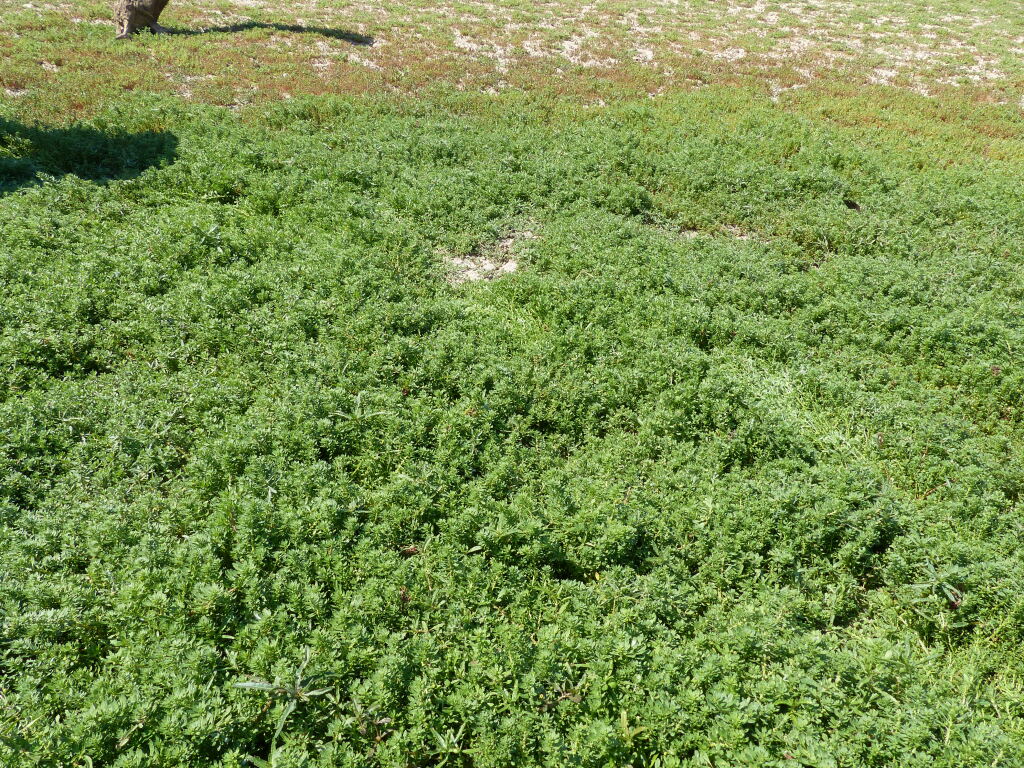Dysphania glomulifera subsp. glomulifera
PigweedSomewhat fleshy annual with spreading prostrate or weakly erect branches to c. 20 cm long. Leaves shortly petiolate, spathulate to broadly elliptic, c. 2–12 mm long, 1.5–3 mm wide, sub-glabrous above, sparsely pubescent below with shortly stalked glandular hairs. Flowers minute, to c. 0.3 mm diam., crowded in sessile axillary clusters, each cluster with 1–few bisexual flowers surrounded by many female flowers; bisexual flowers with 3 free or shortly united obovate tepals, stamens 1 or 2; female flowers with 1(–2) tepals, filiform at base, expanded and spongy above, hooding the developing fruit and generally falling with the seed attached. Seed erect, dark red-brown, flattened-ovoid with a narrow flange along one side, smooth or minutely verrucose, c. 0.5 mm long. Flowers mostly Dec.–Apr.
LoM, MuM, Wim, VVP, VRiv, MSB, RobP, MuF, GipP, Gold, CVU, NIS, HSF. Also WA, SA, Qld, NSW, ACT. Occasional on damp earth or drying mud around lakes, rivers and reservoirs, chiefly in the north-west (Mildura–Robinvale area) but scattered elsewhere in warmer districts (e.g. Dimboola, Stawell, Bendigo, Lake Eildon, Glenmaggie Reservoir).
Walsh, N.G. (1996). Chenopodiaceae. In: Walsh, N.G.; Entwisle, T.J., Flora of Victoria Vol. 3, Dicotyledons Winteraceae to Myrtaceae, pp. 129–199. Inkata Press, Melbourne.
 Spinning
Spinning


